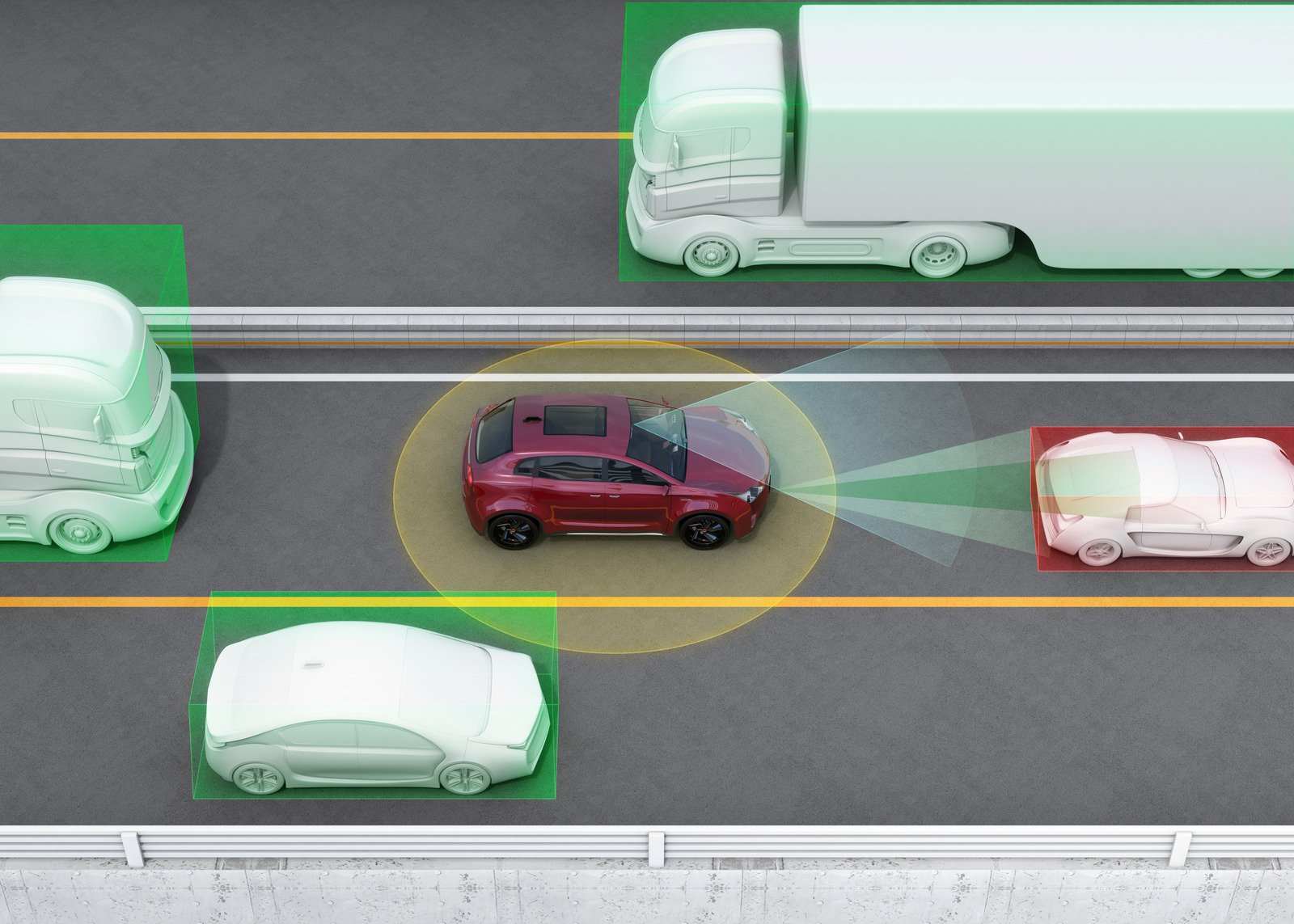Navigating Change: A Guide to the Updated Highway Code Rules in 2023
The new highway code rules 2023 have been long awaited by drivers and road users across the country.
With advancements in technology, changes in traffic patterns and an increase in road accidents, it is essential to update the rules of the road to ensure safety for all.
The new code has been designed to make it easier for drivers and other road users to understand their responsibilities on the road. It also aims to promote better driving habits and reduce the number of accidents on our roads.
In this guide, we will walk you through the key changes in the updated highway code rules and provide you with tips on how to navigate these changes smoothly.
What's new in the 2023 Highway Code?
The Highway Code is the official guide to using UK roads, providing rules and regulations for all road users.
It was first published in 1931 and has undergone numerous updates over the years to reflect changes in technology, infrastructure, and road safety practices.
In October 2021, the Department for Transport announced plans to update the Highway Code once again, with new measures set to come into effect in 2023.
This guide aims to provide an overview of the upcoming change and what they mean for road users.
Key Changes
There are several key changes that will be implemented in the updated Highway Code.
Hierarchy of Road Users
One of the most significant is the introduction of a hierarchy of road users, which prioritizes more vulnerable users such as pedestrians, cyclists, and horse riders.
This means that motor vehicle drivers must give way to these road users when turning or crossing a junction, as well as giving them sufficient space when overtaking.
Pedestrians Crossing
Pedestrians waiting to cross a road will also have priority over turning vehicles.
The aim of this change is to promote safer interactions between different types of road users and reduce the number of accidents involving vulnerable road users.
Parallel crossing
Another new measure is the introduction of a "parallel crossing," which combines elements of both zebra and pelican crossings.
This type of crossing will have flashing amber lights to warn drivers that pedestrians are about to cross, and they must give way when the lights are flashing..
Horse Drawn Vehicles
Horse drawn vehicles likewise will also be given more rights and protections under the new code, including being allowed to use cycle lanes where necessary.
Horse riders will also be permitted to use the pavement when necessary, as long as they give way to pedestrians.
Cyclists
Cyclists will have more guidance on safe cycling practices and their rights on the road.
This includes the introduction of a new "safe passing distance" rule, where drivers must leave at least 1.5 meters between their vehicle and a cyclist when overtaking cyclists.
Shared use cycle tracks
Shared use cycle tracks, where cyclists and pedestrians share a designated path, will also have new rules in place.
Cyclists must now give priority to pedestrians on these paths, and must not cycle at speed or dangerously.
In addition, electric scooters will also be allowed to use shared use cycle tracks under the updated code.
Introduction of "Smart" Crossings
The updated code will also introduce "smart" crossings, which use sensors to detect when a pedestrian is waiting to cross and automatically extend the crossing time.
These crossings will also have tactile paving and audible signals for visually impaired pedestrians.
Smart Motorways
With the increasing popularity of smart motorways, the updated Highway Code will provide clearer guidelines on how to safely use these roads.
This includes clear instructions on what to do in case of a breakdown or emergency, as well as specific speed limits for different sections of the motorway.
Slow moving traffic travelling in the same direction will also be encouraged to use designated "lane three" if available.
Stationary traffic will also be required to use the hard shoulder, if available, in case of an emergency.
Mobile Phones
The new code will also make it an offence to use a handheld mobile phone while driving, not just when making calls but also when using any form of communication such as sending text messages or checking social media.
This change aims to reduce distractions and improve overall driver concentration on the road.
New Rules for Electric Vehicles (EVs)
As the use of electric vehicles continues to increase, there will be new rules in place to accommodate their unique features.
This includes guidance on how to safely charge an EV, as well as rules for using designated charging bays and lanes.
This includes not blocking access to charging points and ensuring that cables are properly disconnected before driving off.
Driver Assistance Technology
With the rise of driver assistance technology, the updated Highway Code will also provide guidance on how to safely use these features and what to do in case of a malfunction.
This includes being aware of the limitations of such technology and not solely relying on it for safe driving.
Driver assist technology is any advanced safety feature in a vehicle that helps the driver maintain control and avoid collisions.
This can include features such as automatic emergency braking, lane departure warnings, and blind spot detection.
Staying Up to Date
As technology and road safety practices continue to evolve, it is crucial for drivers and other road users to stay updated on any changes in the Highway Code.
The Department for Transport has announced that there will be a review of the code every five years, ensuring that it remains relevant and effective in promoting safe driving habits.
Additionally, regular updates and amendments may be made in between reviews, so it is important to regularly check for any changes.
Reduce Danger
The new Highway Code also emphasizes the importance of being an attentive and responsible driver.
This includes avoiding distractions such as eating, drinking, or adjusting music while driving, as well as always wearing a seatbelt and avoiding driving under the influence of alcohol or drugs.
Legal Requirements
It is important to note that the Highway Code is not a legal document, but many of its rules are backed by law.
This means that failure to follow the code could result in penalties or even prosecution in some cases.
It is the responsibility of all road users to familiarize themselves with the updated rules and adhere to them for the safety of themselves and others on the road.
Other Rule Changes for 2023
Alongside the aforementioned key changes, additional adjustments have been made in certain regions of the UK. These modifications include:
20 mph speed limit zones in Wales.
Lower speed limits in designated areas in London.
Changes to the use of red lights at pedestrian crossings.
12 councils now have the power to fine motorists.
Graduated driving licences for new drivers under 25.
DVLA eyesight rules could change in weeks.
London's ultra low emission zone (ULEZ) is expanding.
Other areas of the UK are also considering implementing low emission zones.
With these changes and more, it is important for all road users to stay informed and updated on the rules and regulations in their respective areas.
20 mph speed limit zones in Wales
In a move to promote safer roads and reduce the number of accidents, Wales has introduced 20 mph speed limit zones in residential areas.
These lower speed limits will help protect pedestrians, cyclists, and other vulnerable road users by reducing the impact of collisions.
Higher speeds are still permissible on main roads and highways.
Low speed limits in designated areas in London
London is also taking steps towards safer roads by implementing lower speed limits in certain designated areas.
This includes setting the default speed limit on all roads within the city's Congestion Charge Zone to 20 mph.
Additionally, there are plans to introduce more lower speed limits zones across the city by 2024.
Changes to the use of red lights at pedestrian crossings
Previously, drivers were only required to stop at a pedestrian crossing when the red light was lit.
However, under the updated Highway Code, vehicles must now also give way if pedestrians have reached halfway across the crossing or are waiting to cross from the opposite side.
This change aims to improve the safety and convenience for pedestrians.
12 councils now have the power to fine motorists
Twelve local authorities in the UK have been granted powers to fine motorists for certain offences within their respective areas.
These include violations such as driving in cycle lanes, blocking yellow box junctions, and making illegal turns.
This move aims to increase enforcement of traffic laws and promote safer roads.
It is a criminal offence to refuse to pay these fines.
Graduated driving licences for new drivers under 25
Under the new code, new drivers under the age of 25 may be subject to a graduated licensing system.
This means that they must adhere to certain restrictions, such as a curfew and limits on passengers in their vehicles, for a designated period of time before being granted a full driving licence.
This aims to reduce the number of accidents involving young and inexperienced drivers.
The greatest harm to young drivers is other road users who are themselves driving irresponsibly.
DVLA eyesight rules could change in weeks
The Driver and Vehicle Licensing Agency (DVLA) has announced that they are considering changes to the current eyesight requirements for driving.
This could include mandatory eye tests at certain intervals, as well as stricter guidelines for visual acuity.
These measures aim to ensure that all drivers have adequate vision for safe driving.
London's ultra low emission zone (ULEZ) is expanding
London's ULEZ, which aims to reduce air pollution in the city, is set to expand in October 2021.
Under this scheme, vehicles that do not meet emission standards will be charged a daily fee to drive within the designated zone.
This expansion aims to improve air quality and promote the use of cleaner vehicles.
Other areas of the UK are also considering implementing low emission zones
Following London's ULEZ, other regions in the UK are also considering implementing similar schemes to reduce emissions and improve air quality.
This includes cities like Birmingham, Southampton, and Edinburgh.
It is important for drivers to stay informed on these changes and any potential fees or restrictions that may affect their daily commutes.
Impact on Drivers
It is important for drivers to understand and adhere to the updated rules when they come into effect in 2023.
Failure to do so could result in penalties and fines, as well as potential accidents and injuries.
Drivers should take the time to familiarize themselves with the changes and adjust their driving habits accordingly.
Conclusion
The updated Highway Code rules in 2023 aim to improve road safety and promote better driving habits for all road users.
By implementing a hierarchy of road users, passenger vehicles giving way, providing clearer guidelines for smart motorway use and addressing the use of technology on the road, these changes will ultimately ensure UK road users safety for everyone.
Horse riders, pedestrians waiting at a zebra crossing and cyclists will be better protected under these new rules.
It is the greatest responsibility of every driver to follow the code and help create a safer driving environment for all.


























